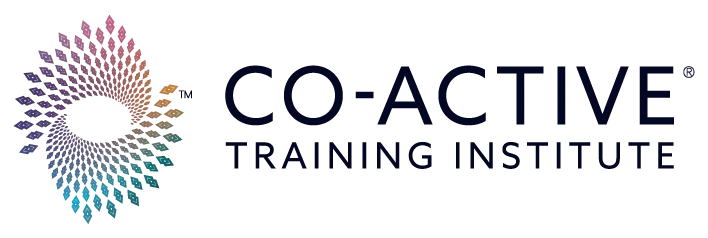Have you ever been part of a team that didn’t function as a unit? Chances are it worked about as well as a car that lost a tire. Teams function optimally in unity—with all tires attached, aligned, and spinning in the same direction.
All teams thrive on clear communication, shared values, collaboration, mutual goals, and relational respect. But that unity doesn’t happen without intentionality. It requires a leader, or coach, who can guide the group. A team coaching program is a useful tool for that coach to follow.
Whether a team is made up of C-Suite leaders or professionals across multiple levels of a company, well-structured group coaching can help them synergize, collaborate, and improve results. Here is a guide to structuring a team coaching program from Co-Active Training Institute, a pioneer of the coaching industry.
The Basics of Team Coaching
The coach sees the team as one unit. They work with members together to uplevel their collective performance, generally focusing on improving their interpersonal dynamics and clarifying and unifying their goals and processes.
Two team coaching examples include a coach facilitating group workshops to improve communication within a project team or a coach guiding a leadership team through strategic planning sessions.
Team coaching programs typically include:
- Assessment: Evaluate the team’s current state and identify areas that need to improve.
- Goal Setting: Define clear and actionable targets that match organizational goals.
- Implementation: Offer group coaching sessions, workshops, and activities.
- Evaluation: Monitor progress and adjust throughout.
This format provides structure for a team that wants—and needs—to grow, and lays the groundwork for a lasting coaching culture within the organization.
6 Key Steps to Developing an Effective Team Coaching Program
A successful team coaching program involves several essential steps:
Understand the Team’s Context
Begin with curiosity to learn the team’s unique dynamics:
- Identify challenges and goals: Engage relationally with team members, asking questions to pinpoint pain points and desired outcomes.
- Use assessment tools: Collect insights through tools like DISC, MBTI, or 360-degree feedback to learn about each individual and their predicted behaviors.
- Observe interactions: Attend team meetings to observe how they communicate and how well they work together.
Use and customize a team coaching model to address these specific needs effectively.
Define Clear Objectives and Success Metrics
Establishing clear goals is the next vital step. Collaborate with the team to:
- Set specific, measurable objectives: Use frameworks like SMART goals to assure clarity.
- Align objectives with organizational aims: Be clear that team goals support broader company strategies.
- Determine key performance indicators (KPIs): Productivity levels, employee engagement scores, and sales figures can serve as metric benchmarks.
Regularly revisit these objectives with the team to maintain alignment and adapt as necessary.
Design the Program Structure
A well-organized structure is the backbone of an effective team coaching program. Consider:
- Session schedule: Decide on the frequency (e.g., weekly, bi-weekly) and duration of coaching sessions.
- Format: Choose between in-person, virtual, or hybrid sessions based on the team’s needs.
- Content preparation: Develop coaching materials and resources that address the team’s specific challenges and goals.
At the beginning, you’ll want to clearly define team roles and responsibilities to ensure accountability.
Incorporate Interactive Techniques
The least engaged team member has the most power and can drastically reduce the momentum and grit of the whole group. Engagement is crucial for the success of any team coaching program. The coach can increase fruitfulness and validate every voice by using interactive methods like:
- Team-building activities: Strengthen relationships and trust among team members.
- Scenario-based exercises: Practice handling real-world challenges with encouraging and responsive conversation.
- Open discussions: Encourage members to share their diverse perspectives to inspire innovation.
The aim is for the team to learn collaboratively and promote a growth culture.
Leverage Tools and Resources
Use a variety of tools to supplement and streamline the coaching process:
- Technology platforms: Applications like Slack or Microsoft Teams help with clear communication and can help track progress.
- Feedback mechanisms: Regular surveys or feedback forms help gauge program effectiveness and areas where improvement is warranted.
- Educational resources: Make articles, videos, or workshops available that support the coaching objectives.
As you implement any of the above tools, clearly communicate each one’s purpose along with the expected outcomes and applicable deadlines.
Regular Progress Reviews
Team programs and their coaches alike benefit from regular evaluations to gauge effectiveness and areas where the coach needs to evolve. Implement:
- Scheduled reviews: Regularly assess progress against established KPIs.
- Feedback sessions: Invite team members to share their experiences and make suggestions.
- Program adjustments: Be prepared to modify the coaching approach based on feedback and observed outcomes.
This iterative process creates momentum and generates a culture of continuous improvement.
Best Practices for Powerful Team Coaching
Organizations that embrace coaching as part of their development strategy see growth in individuals and progress across the organization. Companies foster stronger employee engagement and retention and create clear paths for professional growth and improved business performance.
A 2023 International Coaching Federation report found that 72% of respondents recognized a direct link between a strong coaching culture and amplified employee engagement—highlighting how impactful coaching can be in shaping a thriving, resilient workforce.
For coaches implementing a team coaching program, we recommend the following five best practices to achieve optimal results.
Create Psychological Safety
Collaborative growth is vulnerable, and vulnerability is a key leadership skill to develop. The coach can cultivate a safe environment for team members to express ideas and ask questions by:
- Establishing ground rules: Assure them of confidentiality and inspire their respect with open communication.
- Encouraging vulnerability: Lead by example, showing that it is valuable to discuss challenges and uncertainties.
A psychologically safe environment invites trust and collaboration.
Balance Structure and Flexibility
While a structured framework provides clarity, adaptability is still necessary and conducive to growth.
- Be responsive to emerging needs: Adjust the program as needed to address unexpected challenges and opportunities.
- Encourage team input: Involve members in decision-making to increase their buy-in and help them feel it is relevant.
This flexibility creates a dynamic and effective program that boosts team morale.
Cultivate Ownership
Coaches can empower team members to take charge of their development by:
- Encouraging self-reflection: Prompt individuals to assess their contributions and areas for growth in confidence, skill, and process.
- Assigning responsibilities: Delegate tasks that promote accountability and skill development.
Authentic ownership leads to increased commitment, enthusiasm, and sustained progress.
Create a Feedback Loop
Regular feedback will help the team to continually improve.
- Implement diverse feedback methods: Use one-on-one sessions, anonymous surveys, or group discussions to gather insights.
- Act on feedback: Demonstrating that suggestions are valued and implemented builds trust and encourages ongoing participation.
A robust feedback loop uplevels the program’s relevance and effectiveness.
Document and Share Learning
Maintaining records of insights and decisions helps learners and programs retain knowledge:
- Develop a centralized repository: Use platforms like shared drives or knowledge management systems.
- Encourage knowledge sharing: Promote the dissemination of lessons learned to other teams or departments.
Documentation is also a valuable resource for future initiatives and fuels a lifelong learning culture.
Learn To Lead With Co-Active
Implementing a structured and adaptive team coaching program is a powerful strategy for improving team performance and helping them achieve organizational goals. Without them, teams often flounder, with each person trying to do his or her own thing. Coaches promote valuable and lasting results when they understand team dynamics, set clear objectives, and cultivate an environment of continuous alignment.
Coach training and certification can provide advanced skills and methods to elevate your coaching practice. The experiential learning approach offered by the Co-Active Training Institute gives ample opportunity to grow in realistic settings with a cohort of like-minded learners committed to helping people experience meaningful change.
Consider joining one of our upcoming Leadership Workshops to increase your leadership capabilities and unlock your potential. These three-day comprehensive sessions focus on the internal elements you need for a deeper coaching impact. Discover how to engage in many spheres of leadership as your authentic self.
Register today to secure your spot!

